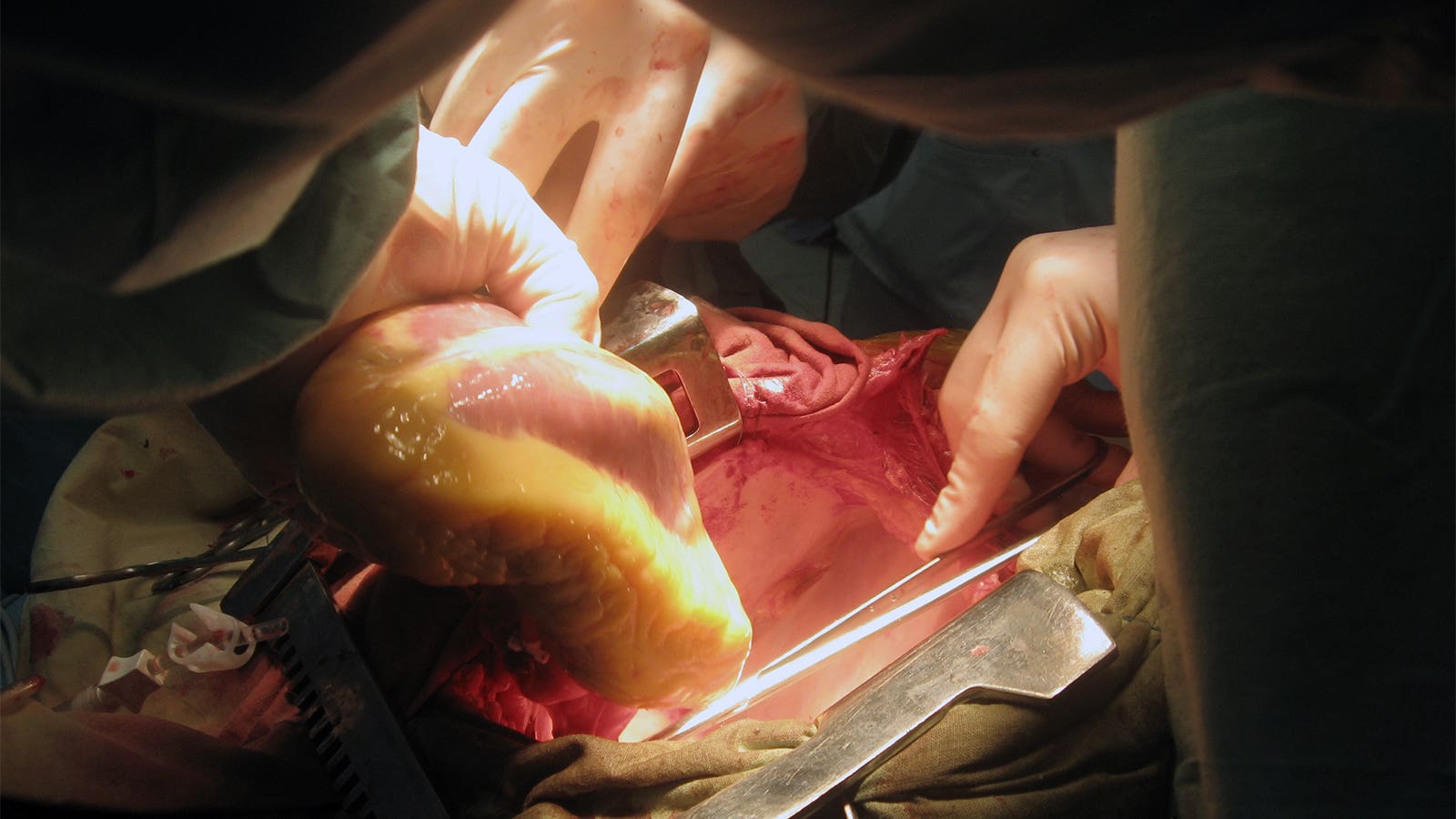Cardiovascular
Coronary Disease That Comes With a Donor Heart Does Carry Risk
Coronary artery disease (CAD) that comes with a donor heart was not uncommon and conferred cardiovascular risk, although not an early death overall, according to data from a large Spanish registry.
Prevalence of CAD transmitted to recipients of heart transplantation was 18.3%, with a 6.9% rate of significant disease marked by stenosis of 50% or more in epicardial coronary arteries, reported David Couto Mallón, MD, of Hospital Universitario de A Coruña in Spain, and colleagues in the Journal of the American College of Cardiology.
Over a mean 6.3 years of follow-up, this donor-transmitted CAD didn’t independently predict all-cause mortality (adjusted HR 1.44, P=0.141), but it did correlate with cardiovascular mortality (adjusted HR 2.25, P=0.011) and combined risk of cardiovascular death or nonfatal major adverse cardiovascular events (adjusted HR 2.42, P<0.001).
These findings came from cardiac transplant patients in Spain largely without donor coronary angiograms to exclude donor-transmitted CAD; “this helps us clarify an important controversy: the relevance of [donor-transmitted] CAD in heart transplant patients,” noted Richard Cheng, MD, of the University of California San Francisco, and colleagues in an accompanying editorial.
“These findings, showing no differences in mortality, do support the use of donor hearts with atherosclerosis, although the increased hazard for cardiovascular death and hospital admission for graft dysfunction does suggest the need for caution and more data,” they concluded.
The researchers agreed: “The reduced number of patients in whom [significant donor-transmitted] CAD was detected may be [one] of the reasons why differences in the primary outcome did not reach statistical significance; however, our findings suggest that the acceptance of hearts from donors with high cardiovascular risk might be considered for a selected group of patients, such as those whose conditions are deteriorating while they are on the waiting list and for whom LVAD [left ventricular assist device] therapy as a bridge to transplantation is not feasible, or those on an urgent HT [heart transplantation] list.”
Based on small prior studies, professional society guidelines have recommended against the use of hearts from donors with known CAD. Even with donor angiogram screening, though, significant donor atherosclerosis can be overlooked, Cheng’s group pointed out.
Indeed, the heart listing criteria instituted in 2018 have led to higher clinical acuity at time of transplant, which “may favor accepting donor hearts with more uncertainty, such as older donors with moderate or less atherosclerosis, or those without angiograms,” they added.
Moreover, the increase in heart transplants from donors after circulatory death (thanks to ex vivo perfusion and normothermic regional perfusion) means more cases in which donor angiograms are unlikely to be available, unlike those of donation after brain death, for which donor angiograms are routine or can be readily requested, they noted.
“Consideration should be given to more frequent ischemic evaluation and surveillance coronary angiography in patients who received a donor heart without a donor angiogram and/or of older age,” Cheng and colleagues suggested.
More research is needed to determine whether percutaneous coronary intervention (PCI) can mitigate the risks from donor-transmitted CAD, they added.
The retrospective DONOR-CAD cohort study included 1,918 consecutive adult cardiac transplant patients from January 2008 through December 2018 at 11 centers in Spain, where angiography of the donor heart was not routine. Just 0.4% of the hearts had pretransplant coronary angiograms. For those that didn’t, the reason was not documented for the vast majority, although the researchers pointed out that noninvasive investigation of CAD might have been selected in some patients.
The analysis included only the 937 recipients (48.9%) who had coronary angiography within 3 months after transplantation (median 42 days).
Mean donor age was 45 years. Donor hearts with significant CAD were more likely to come from donors who were older, men, had diabetes, and had died of a cardiovascular accident or a stroke. However, neither donor nor recipient age interacted with the association (or lack thereof) between transmitted CAD and all-cause mortality.
Among the 65 patients who had significant CAD seen on angiography, five received conservative treatment, 36 were tested for ischemia (all negative), and 24 underwent revascularization. The sole death among the intervention patients was in the only patient to have coronary artery bypass graft surgery.
“Numbers were too small to determine whether PCI mitigates cardiovascular death,” Cheng and colleagues noted, “although we have previously published that the use of second-generation drug-eluting stents for CAV [cardiac allograft vasculopathy] is not only feasible but also associated with excellent stent patency, and with careful clinical and angiographic surveillance and follow-up, seem to normalize survival with similar survival compared with patients without significant CAV in landmark analysis.”
The researchers cautioned that the study was affected by selection bias, which could have led to an underestimation of the true prevalence of donor-transmitted CAD. Other limitations included that follow-up wasn’t as long as median survival for these patients and that certain variables, like serum lipids, were missing.
With more data on safety of transplant with donor-transmitted CAD, it may be possible to incorporate noninvasive or invasive stress testing and develop risk scores to allow more routine use of older donors after circulatory death who had mild focal atherosclerosis or no donor coronary angiograms and thus further expand access for patients waiting on the transplant list, the editorialists speculated.
Disclosures
Couto-Mallón disclosed research grant funding from the Fundación Mutua Madrileña for the study, which was also supported by European Union Regional Development Funds.
Co-authors and editorialists disclosed no relevant relationships with industry.
Primary Source
Journal of the American College of Cardiology
Source Reference: Couto-Mallón D, et al “Prevalence, characteristics, and prognostic relevance of donor-transmitted coronary artery disease in heart transplant recipients” J Am Coll Cardiol 2023; DOI: 10.1016/j.jacc.2023.06.016.
Secondary Source
Journal of the American College of Cardiology
Source Reference: Cheng R, et al “Donor-transmitted coronary artery disease: another avenue to expand heart transplantation?” J Am Coll Cardiol 2023; DOI: 10.1016/j.jacc.2023.07.001.
Please enable JavaScript to view the comments powered by Disqus.

